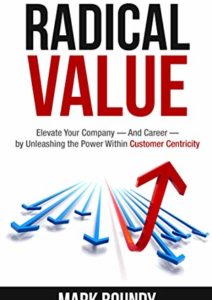In the Dec. 7, 2020 episode of my podcast, Rob Hartnett gave a piece of advice that I loved so much that it’s this article’s title. This advice is gold, for a bunch of reasons.
Imagine you’re an incumbent supplier with a prospect who trusts you to help them consider a new initiative from the outset. How do you sell then? How is that different than when you sell like you’re on the outside looking in? It’s amazingly different:
Your Mindset:
When you know you have the inside track, you’re more relaxed & confident. Thus, you are more focused on the customer’s success than what “moves” you want to make. If you’re acting like a favored incumbent, you want to do everything to make the relationship more defensible…more sticky. You’re likely to use that relaxed confident mindset to invite a collaborative approach with your customer, where it feels like you’re co-creating a solution.
Your Customer Knowledge
If you’re already in business together, you’ve done the work to learn the ins and outs of their business, their management priorities, their strategies, etc.
If you want to sell like you’re already in business together, you do your research so that you can be that trusted advisor who has insider knowledge and outsider ideas. That’s a pretty good way to sell.
Your Discovery Process
Using your familiarity with their business you can ask questions to help your customer reframe their own situation in new ways, and from fresh angles. You’re able to ask better questions, and have meaningful business conversations (not sales ones)…the ones that help the customer know why they’re doing this, and what outcomes they are building toward… and to more clearly understand the costs of doing nothing.
Your co-created go-live plan (not your selling strategy)
When you’re co-creating the future with a customer, sales strategy gives way to the customer’s buying process, and you make all efforts to align with that. The first step on that journey is selling methodology, but most selling methodologies mark “signed deal” as the finish line. For your customer that marks the starting line.
Thus, instead of a sales strategy or “win plan”, what you have is a rigorous go-live plan to:
- Engage all stakeholders,
- Gain their perspectives,
- Discuss approaches, gain buy-in, collaboratively adjust, repeat,
- Broaden the discussions to a wider audience of everyone who will be impacted and involved,
- Engage with experts and resources on both sides to get complete understanding and buy-in from not only customers, but from key selling organization resources
- Learn everyone’s expectations, then try to translate expectations into success measures and KPIs – never forgetting to honor the personal expectations metrics are based upon.
- Develop plans for a successful implementation
- Putting together a vision of what will come next; what follow-on enhancements might come next.
- Execute a change management program.
Remember, your customer wants to perform all of these steps – the only question is whether they’ll do it with or without you. If you join them on their journey, choosing you feels like the natural choice
If you have a great sales methodology, you are already doing many of these things…but probably not all, and definitely not in the spirit of co-creation.
Your proposal
With your intimate knowledge of their business, you will come up with customized, perfect-fit solutions that go beyond the simple requests, often deeper than any RFP would be able to cover. While a proposal will be needed for contracting purposes, the relationship will have created expectations and a level of trust that can’t all be captured in a contracting document.
When you’re already doing business with each other, both parties feel like the contract is not the best way to capture the nuances of the relationship. They sign contracts, but the trusting relationship means so much more to each party.
Your Close
When asked to recount their buying journey, customer rarely even mention the milestone “signed the deal”. It’s mostly an afterthought. In fact, right when your sales team is ringing a bell or some other act of celebration, someone at your customer is experiencing the dread of accountability and new risk. Your go-live plan is what avoids this
Perhaps most importantly, when you focus on the customer’s outcomes, you aren’t focusing on your competitor. That simple difference in focus wins a lot of customers. No sprinter won their race looking sideways at the other runners…they focus on the finish line. Follow their example, with the customer’s needs your finish line.
Your Price
The payoff for the extra effort of selling like you’re already in business together is threefold:
- More frequently winning the deals you really want to win.
- Winning your deals at a higher price—either less discounting or more value-based pricing
- Customers have a higher preference and stronger loyalty to a partner who helps them succeed.
Pricing is profit. Every dollar you achieve in price premium is a profit dollar. When you’re winning more of the opportunities where you add the most customer value, your client relationships are more defensible and mutually beneficial.
Your Move
If you’d like to learn more, or would like to learn how to sell like you’re already in business together, feel free to check out my website, or just send me a note.
To Your Success!













Comments (5)
I love this article…. It widens mind
yeah this also improve sales in business
I love this
I love it
Awesome